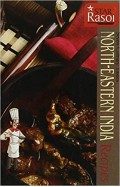- Home
- Categories
- Non Fiction
- Queer Companions - Religion, Public Intimacy, and Saintly Affects in Pakistan
Queer Companions - Religion, Public Intimacy, and Saintly Affects in Pakistan
By: Omar Kasmani
-
Rs 8,995.50
- Rs 9,995.00
- 10%
You save Rs 999.50.
Due to constant currency fluctuation, prices are subject to change with or without notice.
In Queer Companions Omar Kasmani theorizes saintly intimacy and the construction of queer social relations at Pakistan’s most important site of Sufi pilgrimage. Conjoining queer theory and the anthropology of Islam, Kasmani outlines the felt and enfleshed ways in which saintly affections bind individuals, society, and the state in Pakistan through a public architecture of intimacy. Islamic saints become lovers and queer companions just as a religious universe is made valuable to critical and queer forms of thinking. Focusing on the lives of ascetics known as fakirs in Pakistan, Kasmani shows how the affective bonds with the place’s patron saint, a thirteenth-century antinomian mystic, foster unstraight modes of living in the present. In a national context where religious shrines are entangled in the state’s infrastructures of governance, coming close to saints further entails a drawing near to more-than-official histories and public forms of affect. Through various fakir life stories, Kasmani contends that this intimacy offers a form of queer world making with saints.
In Queer Companions Omar Kasmani theorizes saintly intimacy and the construction of queer social relations at Pakistan’s most important site of Sufi pilgrimage. Conjoining queer theory and the anthropology of Islam, Kasmani outlines the felt and enfleshed ways in which saintly affections bind individuals, society, and the state in Pakistan through a public architecture of intimacy. Islamic saints become lovers and queer companions just as a religious universe is made valuable to critical and queer forms of thinking. Focusing on the lives of ascetics known as fakirs in Pakistan, Kasmani shows how the affective bonds with the place’s patron saint, a thirteenth-century antinomian mystic, foster unstraight modes of living in the present. In a national context where religious shrines are entangled in the state’s infrastructures of governance, coming close to saints further entails a drawing near to more-than-official histories and public forms of affect. Through various fakir life stories, Kasmani contends that this intimacy offers a form of queer world making with saints.
Queer Companions - Religion, Public Intimacy, and Saintly Affects in Pakistan
By: Omar Kasmani
Rs 8,995.50 Rs 9,995.00 Ex Tax :Rs 8,995.50
Pakistan Desires - Queer Futures Elsewhere
By: Omar Kasmani
Rs 9,445.50 Rs 10,495.00 Ex Tax :Rs 9,445.50
Zubin Mehta: A Musical Journey (An Authorized Biography)
By: VOID - Bakhtiar K. Dadabhoy
Rs 892.50 Rs 1,050.00 Ex Tax :Rs 892.50
Rich Dad Poor Dad - What the Rich Teach Their Kids about Money That the Poor and Middle Class Do Not!
By: Robert T. Kiyosaki
Rs 2,695.50 Rs 2,995.00 Ex Tax :Rs 2,695.50
The 10X Rule: The Only Difference Between Success and Failure
By: Grant Cardone
Rs 11,875.50 Rs 13,195.00 Ex Tax :Rs 11,875.50
The 4-Hour Work Week - (Vermilion Life Essentials)
By: Timothy Ferriss
Rs 3,225.75 Rs 3,795.00 Ex Tax :Rs 3,225.75
Essentialism: The Disciplined Pursuit of Less
By: Greg Mckeown
Rs 2,965.50 Rs 3,295.00 Ex Tax :Rs 2,965.50
The Psychology of Money - Timeless lessons on wealth, greed, and happiness
By: Morgan Housel
Rs 3,480.75 Rs 4,095.00 Ex Tax :Rs 3,480.75
The Origins of Political Order From Prehuman Times to the French RevolutioN
By: Francis Fukuyama
Rs 4,045.50 Rs 4,495.00 Ex Tax :Rs 4,045.50
Manning Up: How the Rise of Women Has Turned Men into Boys
By: Kay Hymowitz
Rs 845.75 Rs 995.00 Ex Tax :Rs 845.75
The Obama Syndrome: Surrender At Home War Abroad
By: Tariq Ali
Rs 1,100.75 Rs 1,295.00 Ex Tax :Rs 1,100.75
The Quest For Meaning: Developing A Philosophy Of Pluralism
By: Tariq Ramadan
Rs 1,185.75 Rs 1,395.00 Ex Tax :Rs 1,185.75
Rich Dad Poor Dad - What the Rich Teach Their Kids about Money That the Poor and Middle Class Do Not!
By: Robert T. Kiyosaki
Rs 2,695.50 Rs 2,995.00 Ex Tax :Rs 2,695.50
The 10X Rule: The Only Difference Between Success and Failure
By: Grant Cardone
Rs 11,875.50 Rs 13,195.00 Ex Tax :Rs 11,875.50
The 4-Hour Work Week - (Vermilion Life Essentials)
By: Timothy Ferriss
Rs 3,225.75 Rs 3,795.00 Ex Tax :Rs 3,225.75
Essentialism: The Disciplined Pursuit of Less
By: Greg Mckeown
Rs 2,965.50 Rs 3,295.00 Ex Tax :Rs 2,965.50
The Psychology of Money - Timeless lessons on wealth, greed, and happiness
By: Morgan Housel
Rs 3,480.75 Rs 4,095.00 Ex Tax :Rs 3,480.75
Disney High School Musical: Wildcat Spirit, No. 2: Stories from East High
By: Disney Storybook Artists
Rs 95.00 Ex Tax :Rs 95.00
Classic Stories of World War II
By: John Steinbeck,James A. Michener,Kurt Vonnegut,Norman Mailer,J. G. Ballard
Rs 1,355.75 Rs 1,595.00 Ex Tax :Rs 1,355.75
The Seven Moons of Maali Almeida
By: Shehan Karunatilaka
Rs 2,160.00 Rs 2,400.00 Ex Tax :Rs 2,160.00
Return on Character The Real Reason Leaders and Their Companies Win
By: Fred Kiel
Rs 2,375.75 Rs 2,795.00 Ex Tax :Rs 2,375.75
China After Mao - The Rise of a Superpower
By: Frank Dikotter
Rs 2,965.50 Rs 3,295.00 Ex Tax :Rs 2,965.50
The Read It Yourself with Ladybird Jungle Book Level 3
By: Ladybird
Rs 797.50 Rs 1,595.00 Ex Tax :Rs 797.50
Zubin Mehta: A Musical Journey (An Authorized Biography)
By: VOID - Bakhtiar K. Dadabhoy
Rs 892.50 Rs 1,050.00 Ex Tax :Rs 892.50
Queer Companions - Religion, Public Intimacy, and Saintly Affects in Pakistan
By: Omar Kasmani
Rs 8,995.50 Rs 9,995.00 Ex Tax :Rs 8,995.50
Pakistan Desires - Queer Futures Elsewhere
By: Omar Kasmani
Rs 9,445.50 Rs 10,495.00 Ex Tax :Rs 9,445.50
Rich Dad Poor Dad - What the Rich Teach Their Kids about Money That the Poor and Middle Class Do Not!
By: Robert T. Kiyosaki
Rs 2,695.50 Rs 2,995.00 Ex Tax :Rs 2,695.50
The 10X Rule: The Only Difference Between Success and Failure
By: Grant Cardone
Rs 11,875.50 Rs 13,195.00 Ex Tax :Rs 11,875.50
The 4-Hour Work Week - (Vermilion Life Essentials)
By: Timothy Ferriss
Rs 3,225.75 Rs 3,795.00 Ex Tax :Rs 3,225.75
Essentialism: The Disciplined Pursuit of Less
By: Greg Mckeown
Rs 2,965.50 Rs 3,295.00 Ex Tax :Rs 2,965.50
The Psychology of Money - Timeless lessons on wealth, greed, and happiness
By: Morgan Housel
Rs 3,480.75 Rs 4,095.00 Ex Tax :Rs 3,480.75















-120x187.jpg?q6)










-120x187.jpg?q6)















